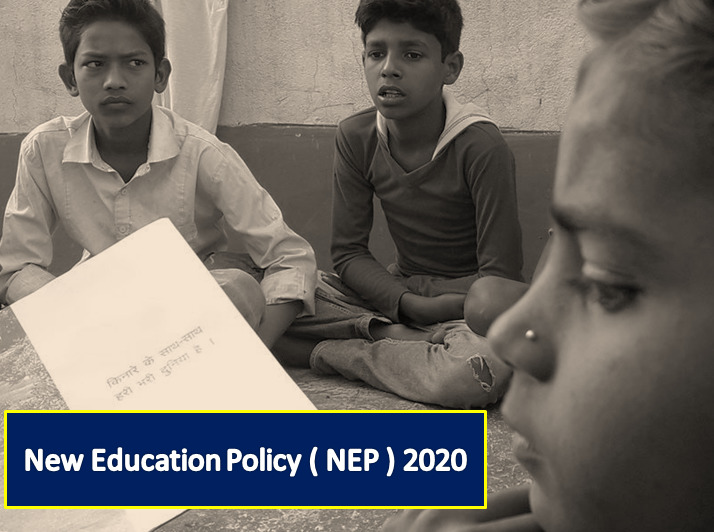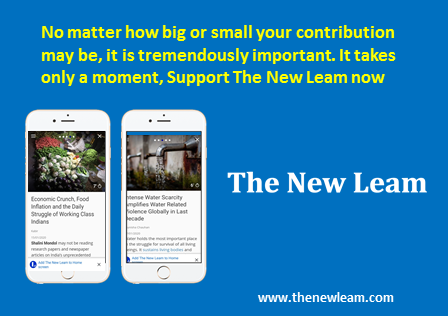This is the first in a series of multiple articles wherein I shall attempt to analyse the New Education Policy (NEP), 2020 and share with you my perspective on the same. I shall take up the analysis sub-section wise, as mentioned in the policy, beginning with my thoughts on the ‘Introduction’ portion of NEP 2020.
The first impression that struck me when I started reading the document was the treatment of Education as a means towards achieving some end – and hence a shift away from its intrinsic worth as Education and learning for its own sake. There are two predominant ends that are envisioned to be achieved through this policy that I could immediately decipher. The first of these is that India should achieve its rightful place in the world – both as an economic and ‘knowledge’ superpower. Secondly, India should embark upon achieving this rightful place, but at the same time, firmly rooted in the ethos, culture and values of ‘ancient India’. The vision of the Policy clearly states, “The National Education Policy envisions an education system rooted in Indian ethos that contributes directly to transforming India, that is Bharat, sustainably into an equitable and vibrant knowledge society, by providing high-quality education to all, and thereby making India a global knowledge superpower.”
What the policy envisages by ‘knowledge superpower’ is clear from another paragraph in the ‘Introduction’ that talks about the increasing need of ‘skilled labour’ in various emerging fields, with the changing ‘knowledge landscape’. It is thus envisaged that education should act as a catalyst so that India’s young population should be able to effectively ‘skill’ itself to act as ‘labour’ for this ‘knowledge’ society. The talk of multi-disciplinary learning is also with an aim to serve the requirements of this ‘knowledge’ society.
The second overarching pillar of the policy is its emphasis on India’s ‘ancient’ ethos, values and culture which somehow need to be redeemed and brought into centre stage once again. Mention is made of ‘the pursuit of knowledge (Jnan), wisdom (Pragyaa) and truth (Satya) as being considered in Indian thought and policy as the highest human goal’.
While the abovementioned two broad discernible threads may not appear to be overtly problematic, yet, attention needs to be drawn to the deeper nuances and the underlying meanings of the flowery language that has been used to provide a cloak to the underlying meanings that are meant to be subtly conveyed but not easily deciphered.
The talk about ‘knowledge superpower’ clearly feeds into the prevalent dominant structures of the capitalist society, where education is seen as a means of creation of ‘skilled labour’ who can act as cogs in the wheel of this giant mechanistic society. Further, with emphasis on ‘flexibility’ in terms of skilling, appropriate grounds are being laid down for further entrenching and permanently establishing the layered structure of our society.
Now couple the above with the single-minded focus on our ‘ancient glorious structures and values systems’ without questioning or even acknowledging its problematic aspects, the most obvious and glaring one being the caste system. What we thus have is a policy that aims at perpetuating the widely prevalent class and caste discriminations in our society.
Next, coming to the acknowledgement of the religious diversity and the spirit of secularism. The policy swings between the ‘ancient’ and the ‘current’ times, conveniently obliterating and completely ignoring everything in between. The tone and tenor of the policy somehow implies that the glorious culture and value systems that our ‘ancient’ past symbolized has been somehow destroyed on the way and we thus need to strive towards regaining our past glory. This implication that the ‘ancient past’ was all glorious and pure and it has been made impure along the way, is highly problematic on various counts. First, it is clear that the ‘ancient’ here is meant to be understood as ‘Hindu’. Secondly, by glorifying this past, it is being placed on a pedestal – outside the reach of any kind of questioning and critical analysis. Its problematic aspects like discrimination based on caste, gender etc. are not even acknowledged, let alone allowed to be questioned. Thirdly, all the good aspects of India’s long history between the so-called ‘ancient’ and the present times is straight away delegitimized by not even acknowledging its existence.
Further, there are many other noteworthy aspects in the Introduction portion of the policy, which need attention. For instance, there is a mention of constitutional values, however, no mention is made of the values of ‘fraternity’ and ‘secularism’ – which are the core values on which our nation is built. Another interesting thing to note is that the policy underlines the need of equitable and high quality education for all, irrespective of an individual’s place in society. Yet, it fails to make any move towards actually realizing this goal which is only possible by a shift towards high quality ‘common schooling system’ provided by the State. In fact, the entire policy is a move in a completely opposite direction. Next, the teachers are ostensibly promised a place of pride in the education system, yet, the overarching centralizing tendencies of the policy, various regulatory bodies prescribed, the curricular framework to be provided from the top and various other such measures, completely falsify the stated intent of dignifying the teachers and providing them with even a semblance of autonomy.
In the previous few paragraphs, I have made an attempt to analyse the overall vision and goals of the policy, in brief. However, as we move along with this analysis, many of the aspects touched upon above will be discussed in detail.


